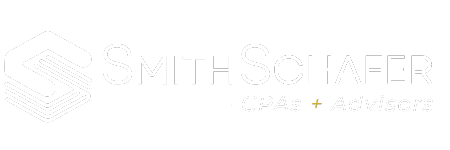This article marks the beginning of Smith Schafer’s informative series on Minnesota’s new Paid Leave Law, which takes effect January 1, 2026. The purpose of MN Paid Leave is to provide short-term assistance for family and medical leave; it will be paid directly by the state to employees on qualified family and medical leave.
MN Paid Leave is not the same as Earned Sick and Safe Time (ESST) which went into effect in 2024. Here’s a quick overview of the Minnesota Paid Leave Law.
Scope and Coverage
- Applies to nearly all MN employers—private and public—with 1 or more employees, regardless of size or revenue.
- Exemptions: federal government, tribal nations, railroad workers; self-employed and contractors may opt in.
- Employers may opt out in certain situations, see below on Optional Equivalency Plans.
Premiums and Payroll Contributions
- Funded via both employer and employee payroll premiums.
- Initial rate: 0.88 % of wages, subject to adjustment up to 1.2 % annually.
- Employers must cover at least 50% of the total; the remainder (up to 50%) may be withheld from employees beginning Jan 1, 2026.
- Wage base will be the FICA limit.
- Small employers may qualify for reduced premiums and grant support.
- Small employers for this consideration are ≤30 employees, avg wages ≤150% State Average Weekly Wage (SAWW)
Reporting & Timing
- Quarterly wage detail reports for Paid Leave started Oct 31, 2024, covering wages from Jul-Sep 2024 onward.
- Reporting leverages the MN Unemployment Insurance (UI) wage system.
- Employers already using UI have their accounts auto enabled.
- Others and previously UI exempt must register for a Paid Leave Only account before Oct 31, 2024.
- First premium remittance by April 30, 2026, covering Jan–Mar 2026 wages.
Employer Obligations
- Educate employees: Update policies and post workplace notices by Fall 2025
- Allow up to 12 weeks each of family and medical leave; total combined cap of 20 weeks per benefit year
- Maintain health insurance coverage during leave if offered while working
- Continue benefits and restore employees to the same or a comparable position following leave
- No retaliation for leave use or requests; protected under MN antiretaliation mandates
Optional Equivalency Plans
- Employers may opt-out of state premiums by offering a state-approved private plan matching or exceeding benefits.
- Regardless, wage reporting and notification requirements still apply.
- The process for opting out and certifying an employer has a state approved plan is still in progress. More information will be provided as its available.
What You Should Do Now
- Confirm UI account status; ensure wage-reporting setup.
- Determine if you’ll share or cover the full premium.
- Consider private equivalency plan—decide before July 2025.
- Budget for new payroll tax and premium processes.
- Map leave policies & employee training ahead of late 2025 rollout.



